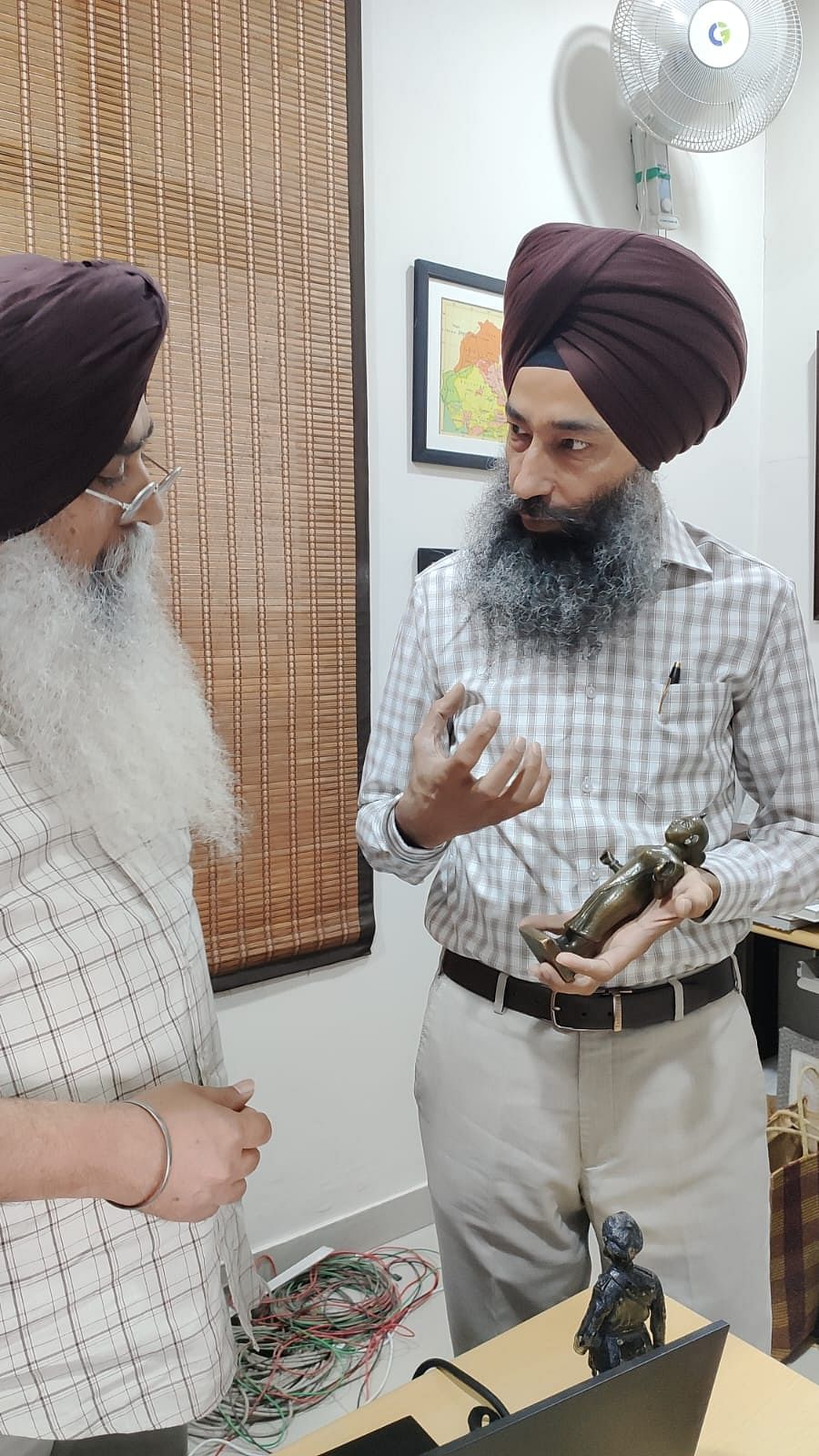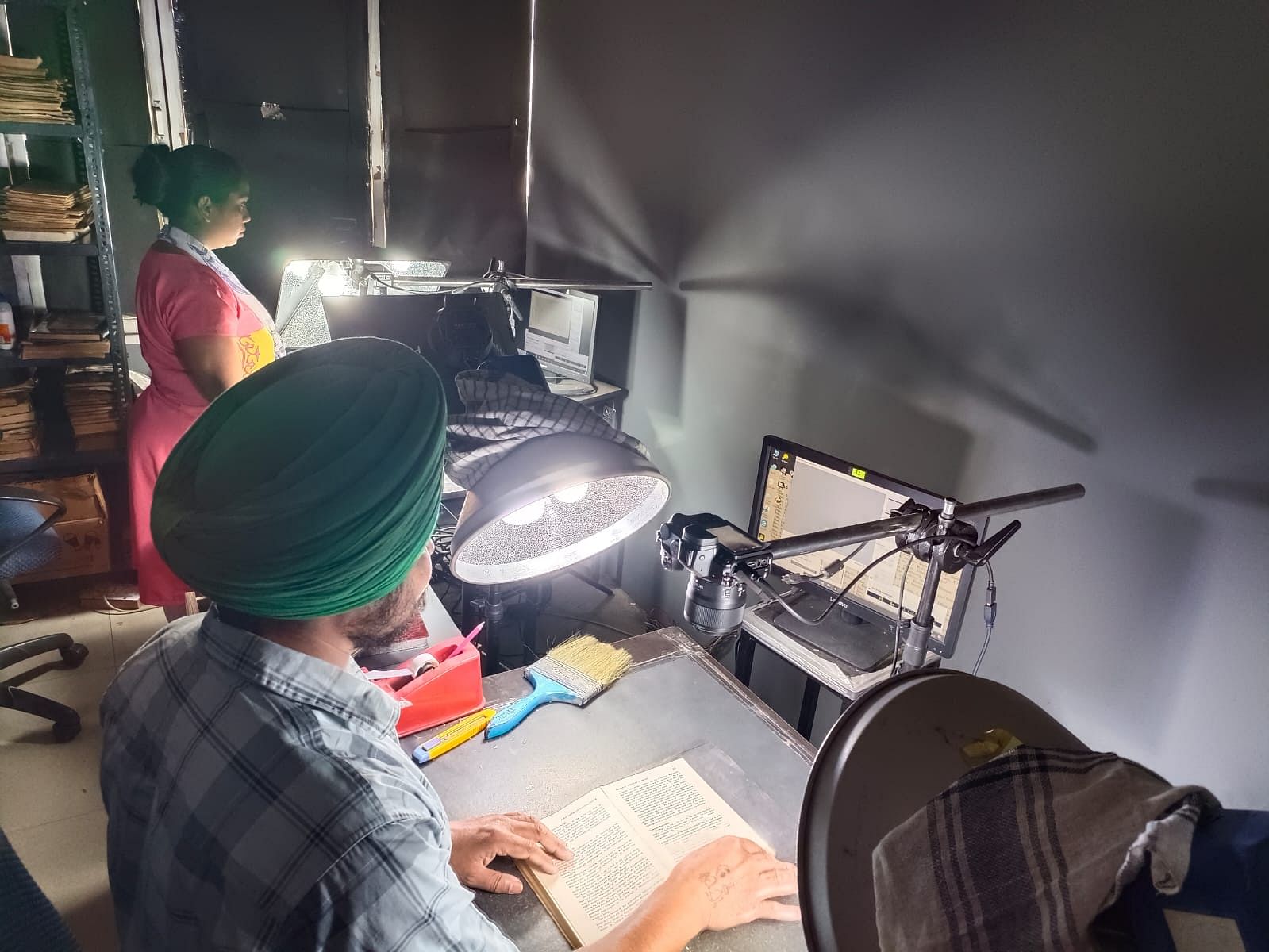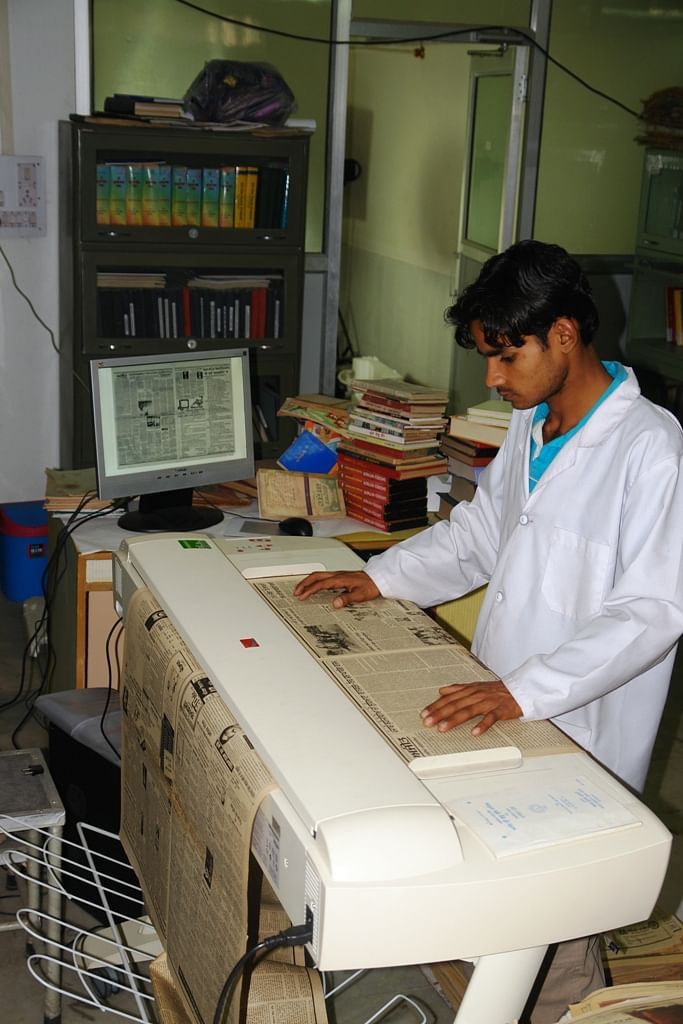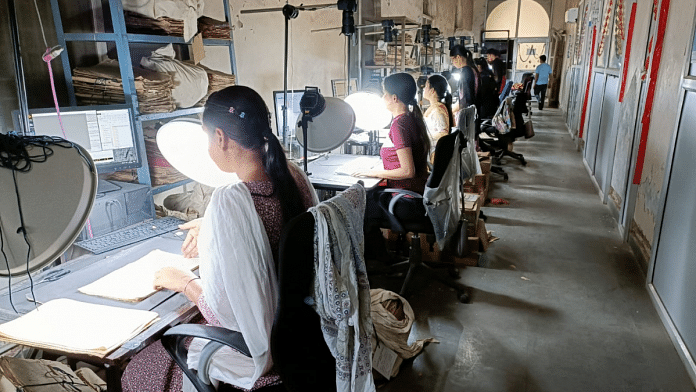Chandigarh: On 20 April, 2003, two men with a passion for history set out on a mission — to digitally archive and catalogue Punjab’s past.
Armed with nothing more than a 3.2-megapixel digital Sony camera and one desktop computer, Davinder Pal Singh and Harinder Singh would hunt down old manuscripts, photographs, and paintings, and persuade private collectors into briefly parting with them so they could take photos.
Working at the time with almost no budget, the two set up shop at Davinder Pal’s house and went wherever work took them, lugging around not only their camera but a heavy computer monitor and CPU on the state’s public transport in all kinds of weather.
Rejections were routine but they persevered, driven only by what Davinder Pal now describes as “pure passion for history and its preservation”.
Harinder has since left, but the organisation he co-founded has grown significantly. Today, the Panjab Digital Library (PDL) has an office in Chandigarh’s Sector 28, with a staff of over a hundred people — including full-time volunteers and an outstation team in Patiala.
From archiving 60,000 pages of manuscripts and photographs in their first year, the PDL has now progressed to doing that many in a day, according to Davinder Pal.

“We like to describe ourselves as a cultural institution that’s preserving the memory of Punjab,” he told ThePrint. “We are committed to being a trusted provider for years to come, until a solution is found to migrate digital memory to alternative formats.”
In total, PDL — which was made available online for free in August 2009 — has 700,000 titles containing over 65 million pages.
This vast collection includes a thousand manuscripts of the Guru Granth Sahib (considered to be a living Guru by the Sikhs); 75 manuscripts of the Hindu epic Ramayana; the largest collection of kissa kav, Punjab’s short stories in poetry format; darbar (court) records of Maharaja Ranjit Singh, founder of the Sikh Empire; and records of the princely states Patiala, Nabha, Jind, Kapurthala, Faridkot, Kalsia, and Malerkotla, as well as Himachal.
It also has a complete collection of Punjab’s gazettes and gazetteers, a large collection of phulkari and bagh designs, and over 7,000 miniature paintings. Not to mention archives of newspapers and periodicals.
Some of this material can be accessed directly from the website, Panjabdigilib.org.
In 2013, PDL embarked on its most ambitious project yet — converting reams and reams of the state’s official archives into digital format. The project, Davinder Pal said, was given to them by the Punjab government.
“It (Punjab government) has preserved about 60 million pages since the 18th century. Of these, we digitised over 20 million pages of single-copy records which didn’t have a backup and had never been replicated. Most of these are from Punjab’s official archives, including pre-1947 state records,” he said.
Among these are not only pre- but also post-Partition documents — a challenging project, according to Davinder Pal.
“State records produced after 1947 are vital,” he said. “Today, it’s easy to do research on the pre-Partition period because most of the records are available. But there’s no archive of post-Partition documents. All documents need to be preserved just as the British had done,” he said.
PDL is currently archiving over 15 million pages a year.
“With all the other in-hand digitisation material available, it will take us five more years to clear the pendency,” he added.
Also Read: Bathinda Fort saw 1,600 years of Sultanate, Sikh history. ASI struggling to hold it together
Attention to detail
Today, PDL, a registered trust, is managed by a board of trustees and directors — many of them living abroad.
“The mission of the Panjab Digital Library (PDL) is to locate, digitise, preserve, collect and make accessible the accumulated wisdom of the Panjab region, without distinction as to script, language, religion, nationality, or other physical condition,” the website reads.
Davinder Pal said that the project emerged from the concerns shared by a group of individuals for the increasing disappearance and loss of heritage of the Sikhs and Punjab.

Apart from Punjab, PDL also digitised over 22 lakh pages of Himachal Pradesh government archives.
“When we say Punjab, we mean the land of the five rivers. That’s why we included Himachal since the two states share a long history,” he said. “Similarly, Haryana has very valuable archival material related to Punjab. We have approached the Haryana government several times to allow us to archive their state records but our requests have not been acceded to.”
Davinder Pal’s commitment to accuracy and authenticity has been paramount in the digitisation process. He has worked diligently to ensure that the digitised content is verified, catalogued, and presented in a scholarly manner, adhering to international standards of digitisation and archival practices.
It’s this attention to detail that has earned PDL a reputation for being a credible and reliable digital resource.
“The digital collection is here because of the people and librarians who have been collecting and preserving records and books for so many years. Had they not done their job, PDL might not have existed,” he said, adding that the archive also includes hundreds of manuscripts in Persian. “When we grow in numbers we see all of us growing together. All Punjabis, all past and future generations of Punjabis or people interested in Punjab, we all grow together.”
With time, the technology used by PDL has changed.
“We have used various scanners and digital cameras to capture the documents on computers,” Davinder Pal said. “What will work best is a decision taken based on the format and condition of the document.”
Most of the digitisation is done without the machine touching the document, he said.
A DSLR camera with a specific kind of lens is positioned over the document that needs to be digitised and shots are taken with appropriate lighting. Cameras that range from 24 to 36 megapixels are used.
The process is long too — one page is digitised in one shot.
“In some cases, for items that are oversized, such as phulkaris or big paintings, we have developed a special machine that can take up to 21 shots of one phulkari and then join them to create a very high-resolution digital file,” he explained.
Digitisation services are provided both on and off sites.
“If the material to be digitised warrants special care and cannot be transported to the PDL offices due to some reasons, then PDL provides its digitisation services right at the place where the material is located,” he said. “In such cases, the equipment and the staff is temporarily moved to a nearby location. For instance, for the government archives, we have teams working in Patiala and Chandigarh.”
‘Preserving history’
For an organisation that’s undertaking such massive archival work, it’s significant that it relies largely on donations.
“Governments have very limited budgets to spend on archives, history and culture. They pay us for government projects but most of the other work is paid for by donors,” Davinder Pal said.

As a result, the organisation runs through various fundraising schemes. One such programme is ‘Adopt-a Book’, under which donors can choose a book or a set of documents for digitisation. In addition to this, donors can also fund equipment acquisition or sponsor projects, the website says.
The idea, according to Davinder Pal, is to save Punjab’s historical archives from the ravages of time.
For this, he has plans to leverage emerging technologies such as artificial intelligence, virtual reality, and big data analytics to enhance the accessibility and usability of the digitised content. He also aims to collaborate with more national and international institutions to further enrich the repository of digitised resources and promote research and scholarship on Punjab’s history and culture.
“Much has vanished, whether through the passage of time, accident, or political unrest,” Davinder Pal said. “But much remains to be preserved.”
(Edited by Uttara Ramaswamy)
Also Read: Mahmud of Ghazni had Punjab, Haryana, Karnataka soldiers. History is not as simple as you think



